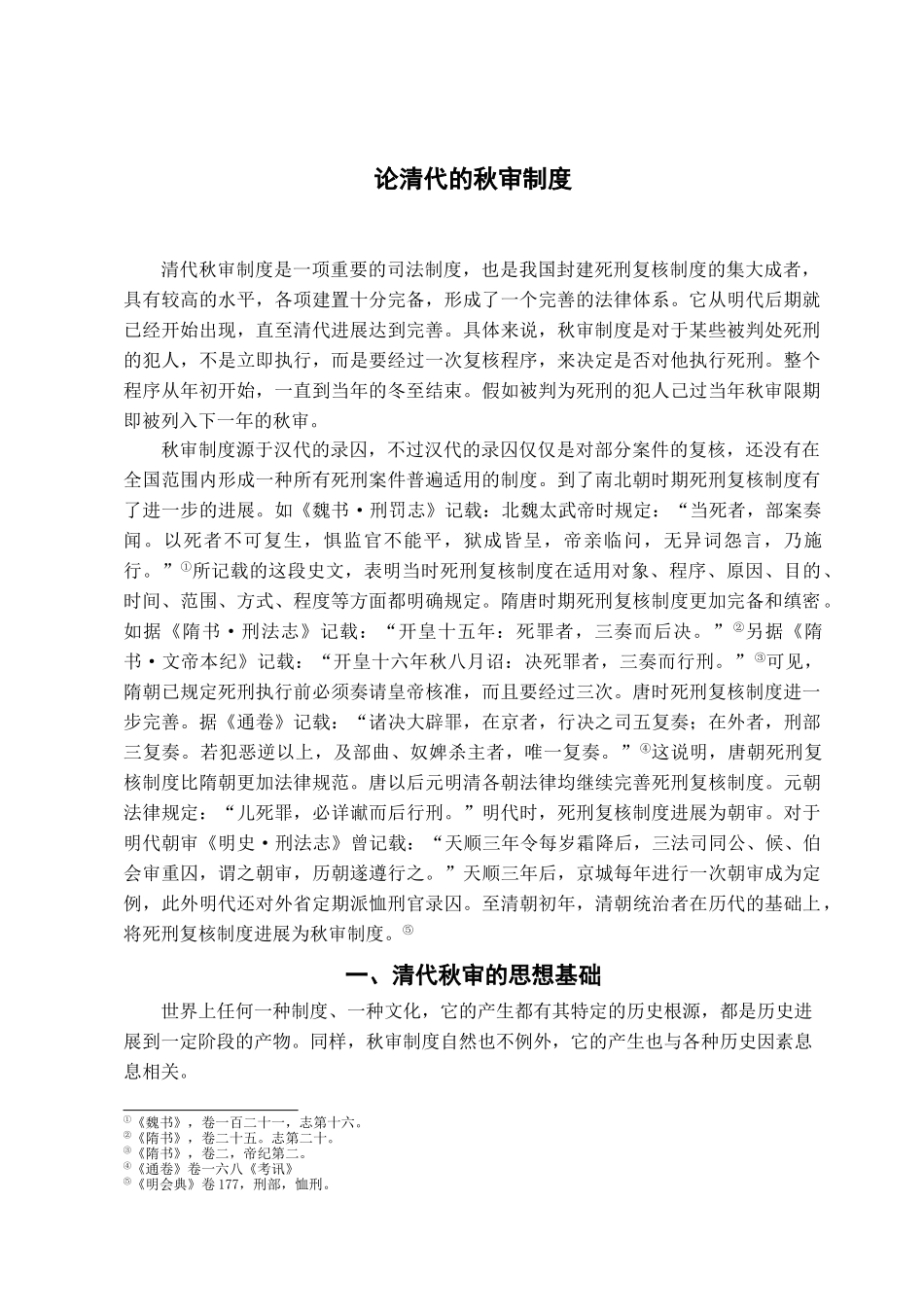Abstract“Qiu Shen”was one of the most important judicatory institutions in Qing dynasty,which prescribed those prisoners who accepted the guilty of“Zhanjian hou'’or“Jiaojian hou' , should have their executions postponed to the next fall to be checked from the local govemors to the emperor again , instead of being killed right away . The process of checking consisted of the inspections of state , governors of the checking department and emperor . The meaning of studying the autumn trial system is not only understanding itself on the foundation of Qing Dynasty’S history and laws,also understanding the whole law system of Qing Dynasty from it,more important is that we should inherit excellent judicial thoughts of Chinese ancient times . we should absorb its advantages such as prudence in punishment , openness , eliminate its limits such as judicial dependence , inefficient , lack of true supervise,SO as to build up our country’S modern judiciary and legal state.Key words : Qiu Shen System ; Death penalty review ; prudence in punishment论清代的秋审制度清代秋审制度是一项重要的司法制度,也是我国封建死刑复核制度的集大成者,具有较高的水平,各项建置十分完备,形成了一个完善的法律体系。它从明代后期就已经开始出现,直至清代进展达到完善。具体来说,秋审制度是对于某些被判处死刑的犯人,不是立即执行,而是要经过一次复核程序,来决定是否对他执行死刑。整个程序从年初开始,一直到当年的冬至结束。假如被判为死刑的犯人己过当年秋审限期即被列入下一年的秋审。秋审制度源于汉代的录囚,不过汉代的录囚仅仅是对部分案件的复核,还没有在全国范围内形成一种所有死刑案件普遍适用的制度。到了南北朝时期死刑复核制度有了进一步的进展。如《魏书·刑罚志》记载:北魏太武帝时规定:“当死者,部案奏闻。以死者不可复生,惧监官不能平,狱成皆呈,帝亲临问,无异词怨言,乃施行。”①所记载的这段史文,表明当时死刑复核制度在适用对象、程序、原...


